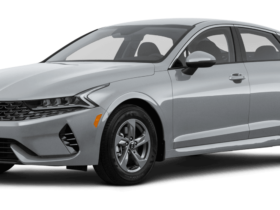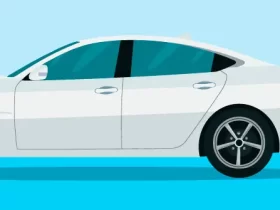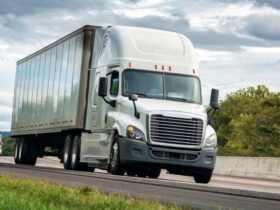If you’re thinking of buying an RV, you’re in great company. In fact, more than 11 million households have an RV or camper that allows them to ditch hotels and take in nature across the country.
But making the decision to buy an RV is just the first part of the process.
You need to make sure you’re making an informed decision and can hold your own at your local RV dealership. Here are a few key things to know before you start looking at models and making offers on new or new-to-you campers.
1. There Are Different Types of RVs
Before you start looking at different RVs, you need to make sure you understand the different types you have to choose from. There are two main types of RVs: towables and motorhomes.
Towable RVs are campers that you tow behind your vehicle. Standard towables and trailers use a ball hitch on the back of your vehicle and can range in length from as little as 10 feet to well over 35 feet.
Fifth wheel RVs mount to a hitch inside the bed of a truck. They’re more stable and easier to tow but tend to be heavier and more expensive.
Motorhomes have their own engines and don’t require a tow vehicle. However, since you’re effectively buying a camper with a vehicle attached to it, they tend to cost more than towable RVs.
If you already have a good truck or SUV with a large towing capacity, towables may be a great choice. But if you don’t have a truck or SUV, motorhomes will be a better fit.
2. Size Matters
Bigger RVs will give you more living space and storage options. But that larger size can make things harder. Remember, you have to drive your RV to your campsite, whether you have a towable or a motorhome.
That means you need to be comfortable maneuvering your rig on narrow roads and through tight turns.
If you choose an RV that’s larger than you’re comfortable handling, getting to your campsite will be tough. Worse, it may keep you from wanting to use your RV as often as you initially thought you would.
Further, some campgrounds can’t accommodate large RVs or may charge a premium for longer spaces.
Before buying a new or used RV, think about your comfort level. If it’s a towable, make sure you’re confident in your ability to drive it. If it’s a motorhome, take it on a test drive and see how it feels on the road.
3. It’s Best to Look at RVs in Person
The best place to buy an RV is at your local recreational vehicle dealership, not online. Why? Because you need to look at different RVs in person to get a feel for the way different floorplans will work for your camping style.
Look at as many makes and models as you can within your budget range. Pay attention to the way the components look and be on the lookout for any signs of damage or wear and tear.
If you notice any warping in the siding or see discoloration along the walls, floor, or ceiling, don’t buy the RV. It’s a surefire sign of extensive water damage that will cost hundreds of dollars to fix if it can get fixed at all.
4. You Can and Should Get It Inspected
Whether you’re buying a used or new RV from a dealership, it’s always a good idea to get it inspected by a third-party RV repair specialist and mechanic. Remember, RVs sitting on sales lots get exposed to the elements 24/7.
This means there’s a good chance that there may be damage that you might not notice until you bring the RV home.
By getting it inspected by a professional, you’ll have the peace of mind that comes from knowing that the RV you’re buying is in great shape and ready for the road. If they identify any issues, you’ll be able to make an informed decision about the purchase.
5. Prices Aren’t Set in Stone
One of the most important things to keep in mind when you’re looking for an RV is that the advertised price may not be firm. In fact, buying an RV can be a lot like buying a car.
The sticker price is the suggested price—the highest price dealerships want to get for the vehicle, not the minimum they’re willing to accept.
Don’t be afraid to haggle a bit. If you’ve visited other dealerships and seen similar RVs listed at lower prices, mention those low prices. Research the values of RVs you’re interested in through the NADA Guide and mention any price discrepancies to the dealership.
Often, dealerships will work with you on the price if they think you’ll end up buying from them over their competitors.
6. Planning Ahead Is Always Best
Owning an RV makes taking spontaneous trips easier. But that doesn’t mean you can get away without planning your trips at least a little. Unfortunately, campgrounds can fill up quickly if you’re not careful.
Be prepared to plan trips in advance. If you’re staying at a campground with full hookups, reserve a site as soon as you decide you’re taking a trip. If you’re boondocking in the woods, research good camping areas before you leave home.
This way, you won’t have to spend the night at rest areas or truck stops surrounded by loud noises.
Now You’re Ready to Buy an RV With Confidence
Buying an RV is both exciting and nerve-wracking. But as long as you keep these things in mind when you start your search, you’ll be able to buy an RV that you’ll love using for years to come.
Just remember that it’s okay to take your time. Look at as many models as you can and choose the setup that works for your needs and your budget. Once you have your RV, you’ll need to start planning your adventures. Check out our latest posts for more tips and tricks to help you plan trips, find campsites, and more.










